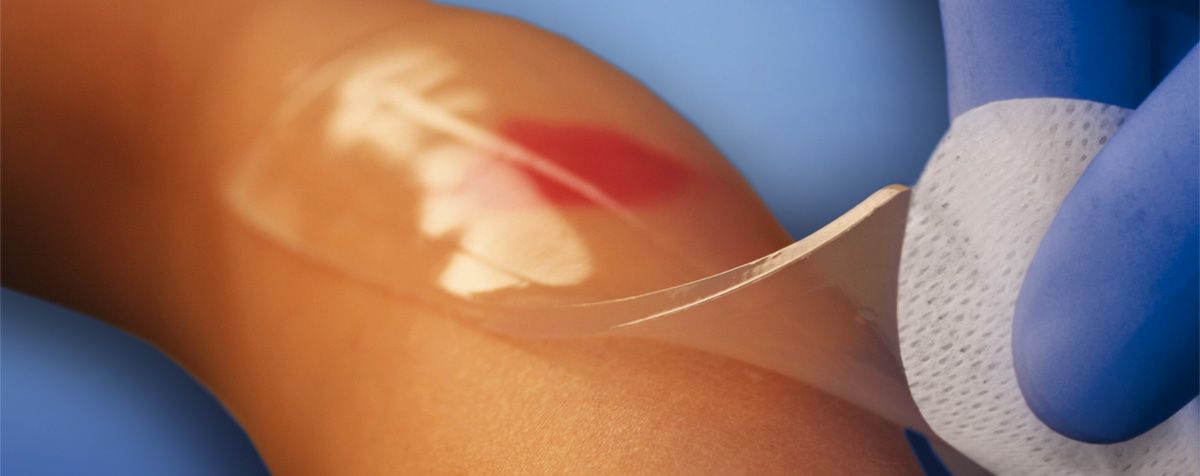Wound healing is a complex process involving coagulation, inflammation, tissue formation and remodeling. formation of biofilm on chronic wounds interferes with the natural wound healing process and makes it difficult to heal. Biofilm consists of aggregates of microorganisms that are protected by a self-produced matrix of extracellular polymeric substances. Multiple factors like contamination of external environment, infection and poor body’s immune response contribute to biofilm formation. Therefore, a key strategy to promote wound healing in chronic wounds is to prevent and disrupt biofilm growth. Anti-biofilm wound dressings have emerged as an effective solution to address this challenge.
What are Anti-Biofilm Wound Dressings?
Anti-biofilm wound dressings are advanced wound care products designed to specifically prevent and tackle biofilm formation on chronic and infected wounds. These dressings contain antimicrobial agents that have anti-biofilm properties. Some common agents used in anti-biofilm dressings are ionic silver, polyhexanide, honey, essential oils etc. These agents work by disrupting the extracellular polymeric substance matrix of biofilm and killing the microorganisms embedded in it.
Major Types of Anti-Biofilm Dressings
There are different types of anti-biofilm dressings available based on the antimicrobial agent and dressing formulation:
Silver Dressings: Dressings containing ionic silver like silver alginate and silver sulfadiazine are among the most widely used. Silver has broad-spectrum antibacterial activity and also disrupt biofilm structure.
Honey-Based Dressings: Natural honey has antibacterial and anti-inflammatory properties. Manuka honey in particular has unique compounds that can inhibit biofilm formation.
Iodine-Based Dressings: Povidone-iodine dressings work against biofilms by releasing iodine which is lethal for microorganisms.
Essential Oil Dressings: The antibacterial properties of essential oils like tea tree oil, eucalyptus oil are harnessed in some dressings to kill bacteria and disrupt biofilms.
Polyhexanide Dressings: This antimicrobial agent has both bactericidal and anti-biofilm effects at very low concentrations, making it suitable for wound care.
Nanocrystalline Silver Dressings: These releasing formulations ensure sustained delivery of ionic silver and better penetration at microscopic wound sites.
Mechanism of Action of Anti-Biofilm Dressings
Anti-Biofilm Wound Dressing work through multiple mechanisms to break down biofilms:
1. The antibacterial agents directly kill planktonic and biofilm embedded bacteria through disruption of cell walls and membranes.
2. The agents interrupt quorum sensing pathways that control biofilm formation in bacteria.
3. They break down and disrupt the slimy extracellular matrix that bacteria secretes to anchor in biofilms.
4. There is inhibition of adhesion of bacteria to wound surfaces and between each other.
5. Some agents induce production of metabolic toxins in bacteria that damage their cellular machinery.
6. Simultaneously anti-inflammatory properties of agents aid wound healing process.
7. Regular dressing changes prevent recolonization of killed bacteria and sloughed biofilm debris.
Benefits of Using Anti-Biofilm Dressings
Some key benefits of using these advanced wound care dressings include:
1. Faster wound healing – By removing biofilm barrier, wounds can heal at accelerated rate.
2. Lesser pain – Biofilms are a major cause of chronic wound pain. Effective removal reduces pain levels.
3. Prevention of infection spread – Dressings containing strong antimicrobials sterilize wounds.
4. Cost-savings – Shorter treatment duration compared to conventional options saves money.
5. Improved quality of life – Pain free chronic wounds boost mobility, productivity and self-confidence.
6. Minimum chances of amputation – Biofilm eradication prevents severe infection that can lead to amputation.
7. Avoidance of antibiotics overuse – Dressings work without antibiotics in many cases.
8. Clinician satisfaction – Easy to use and effective dressings alleviate practitioner burden as well.
Thus, anti-biofilm wound dressings have revolutionized management of infected chronic wounds by shortening healing timeline in a cost-effective manner to improve patient and clinician experiences. Their mechanisms holistically address underlying biofilm issue without systemic antibiotic intake and side effects.
*Note:
1. Source: Coherent Market Insights, Public sources, Desk research
2. We have leveraged AI tools to mine information and compile it

